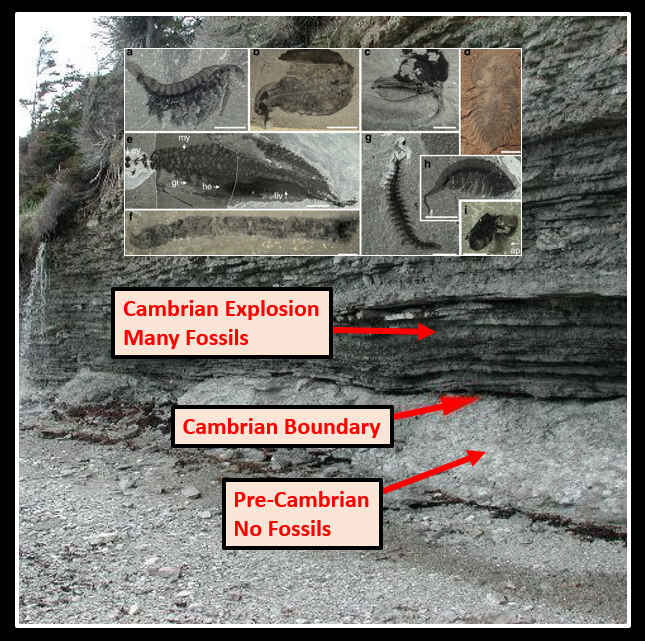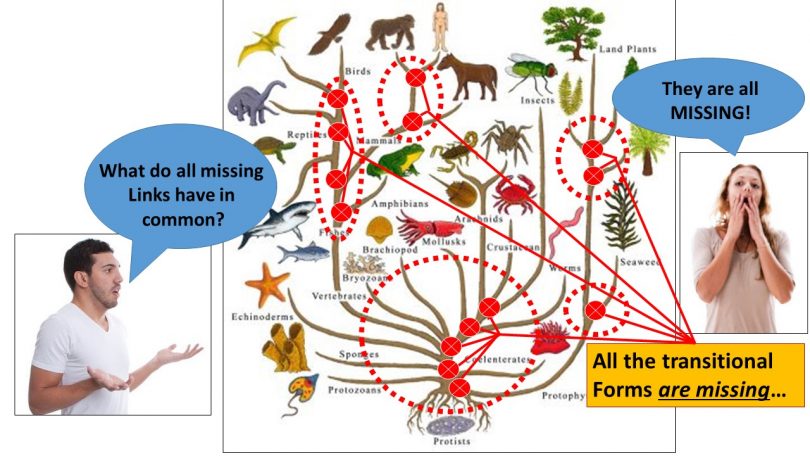Naturalists explain that: the common misconception of evolutionary biology (as illustrated on the so called ‘tree of life’) is one presupposes that evolutionists are hunting for “missing links”. But they are not, therefore,
…by relying on this misconception, ‘antievolutionists’ present the supposed absence of transitional forms from the fossil record as evidence against evolution.”
This is laughable.
If the fossil record is what is being hailed as “proof of evolution”, and those very fossils are the data being used as this ‘proof’, then yes, we are pointing it out!
Naturalist contend that the fossil record is ‘proven’ not by fossils alone but by other fields (groupthink) and thus so is common ancestry evolution. Below, the naturalist explains, “we do not expect to find (any) missing links”, therefore we should use other “teaching” methods such as “cladistics” (classification based on measurable common characteristics of organisms) or “free-thinking curriculum” to focus on the evolutionary transitions (because the evidence is lacking in the fossil record one “save” is the Theory of Punctuated Equilibrium.

Students of biology need to understand that evolution is a branching process, paleontologists do not expect to find “missing links,” and evolutionary research uses independent lines of evidence to test hypotheses and make conclusions about the history of life. Teachers can facilitate such learning by incorporating cladistics and tree-thinking into the curriculum …to focus on important evolutionary transitions.
https://link.springer.com/article/10.1007/s12052-009-0126-3


